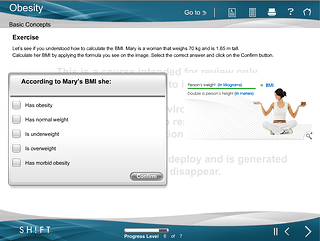Learners have always been pretty hesitant to jump in head first with taking eLearning courses. What usually happens with eLearning? They end up leaving the course because content does not impart plausible information such that learners feel the problems they encounter in their workplace are addressed realistically by the learning. That means a whole lot of wasted time. What a bummer. Specially, how many times, have students taken courses or training they end up believing is irrelevant and meaningless. Well, take that experience and NEVER apply it in the eLearning projects you develop.
Adding realism to your courses helps improve the learning process, while preparing students for situations that may be encountered in their daily lives. Realism also adds credibility to the project, which is very important for the employee, who usually has limited time available.
But, how do you know what reality is like for learners? To discover this, first it’s necessary to know your audience. By knowing your students you will be able to identify common problems that must be resolved, the specialized or specific vocabulary of their work environment, their reactions to various cases, among others.
Once you collect this information, you’re ready to give a touch of realism to your eLearning courses.
Here are some strategies or resources you can use to achieve this:
#1 Learning Agents
![]() Learning agents or avatars can be a fundamental piece to add realism to a course. By using avatars, companies find they can combine the best parts of both face-to-face training and eLearning technology. These characters offer an almost human touch that may help reinforce content.
Learning agents or avatars can be a fundamental piece to add realism to a course. By using avatars, companies find they can combine the best parts of both face-to-face training and eLearning technology. These characters offer an almost human touch that may help reinforce content.
The first aspect to consider is the characteristics of these agents, both in their appearance and personality. Its important students identify with the avatars and that these ones play a significant role during the course. Its key you define the character’s clothing, style, race, profession, speech, and especially the voice. All these should align with your audience profile.
For example, these characters may represent a fellow of the department, an authority figure like a “boss”, a teacher or an expert instructor to transmit their knowledge to learners.
Always keep in mind that learning agents are a guide in the learning process and must appear at strategic moments according to the role they fulfill. Therefore, make sure you interact with learners at the appropriate times, and for the right reasons.
# 2 Case studies and examples
 Another strategy to create a realistic course is to provide examples, illustrations, case studies, success stories and common situations (both positive and negative) that helps support content.
Another strategy to create a realistic course is to provide examples, illustrations, case studies, success stories and common situations (both positive and negative) that helps support content.
Presenting past situations and their outcomes to demonstrate learners what could happen is a great way to make them retain information. Let’s deal with it: sometimes the best way to transmit content is to show learners through examples. It’s a really effective way because students learn by seeing results, they remember more by picturing stories and they recognize when to use the model by comparing their present experience to the story.
According to studies, students learn to solve problems in real life by comparing the actual problem to problems they’ve encountered in the past. Therefore, by presenting case studies and success stories learners can recall cases they've encountered in their training sessions in order to solve an real case.
Preparing any type of case study or example definitely takes more time and requires you to work more on content to make sure everything is accurate and realistic. However, it’s worth it! They make your courses more engaging and lead to better transfer on the job. Above all, it’s essential that your audience identifies completely with the characters, settings and themes addressed in each case or situation.
# 3 Analysis and reflection
 Under the same approach to create realistic learning environments, you can stimulate students capability for analysis and reflection by making direct questions about their experiences, for example:
Under the same approach to create realistic learning environments, you can stimulate students capability for analysis and reflection by making direct questions about their experiences, for example:
- Within the development of a topic in an informative screen.
- In screens dedicated exclusively to reflect a particular subject.
- With short answer exercises, where students can give their opinion or share their experiences.
Reflection can lead to a greater comprehension of the topic, which in turn is a first step to performance improvement. Taking time to reflect can help learners identify approaches that have worked well, and in that way reinforce good practice. Some ways in which you can use questions can be:
- To help learners clarify what they know and what they don’t know before they start a course.
- To follow up on the key learning points delivered.
- To be challenging and grab the learner’s attention.
# 4 diagrams and schematics
Sometimes courses are focused on the description of special equipment or processes used by employees in their daily work. In these cases its essential to include diagrams to facilitate understanding. Diagrams do a great job focusing on key points of information.
In addition, we recommend the use of charts and mind maps to facilitate the comprehension of a complex theme or to reinforce a certain topic. These resources catch your attention because they look great and have strong visual hooks.








